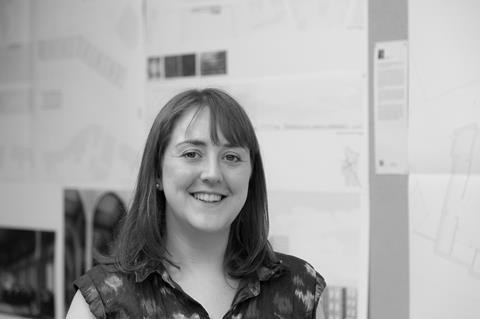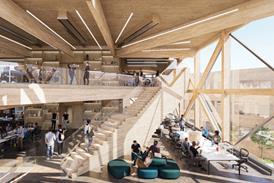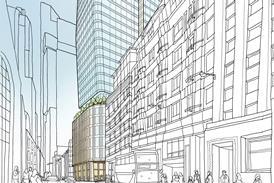Ivanka Trump unveiled a plaque at the new US embassy - and unleashed a bloody new chapter in Jerusalem’s long history of rancour

I have never been particularly interested in architecture before the people turn up. Those glossy spreads in architecture magazines of perfectly staged, empty buildings with a single blurred figure have rarely moved me. Craftsmanship is inspiring, but without inhabitation buildings and cities lack soul. Last week the fight for the soul of one particular city erupted again – a single carved piece of stone undermining decades of painstakingly constructed policy – and much as I want to I can’t look away.
In front of that carved stone Ivanka Trump opened the US Embassy to Israel in Jerusalem, triggering a wave of violence across the barely held peace of the region. Arguably no city has ever been so constantly and repeatedly weaponised as Jerusalem – that city of no particular architectural or geographical significance where the God of the Abrahamic faiths chose to reach down and touch earth.
The city has a long and gruesome history – always cast as pawn in the games of the internationally powerful. Its unique place in the hearts and souls of around a third of the world’s population means that when this city is in play the world will pay attention.
In its long history Jerusalem has been eyed, attacked, conquered and leveraged by figures (including but not limited to): King David of Israel, King Nebuchadnezzar of Babylon, Cyrus II (The Great) of Persia, Alexander the Great, and the Emperors of the Roman and Byzantine empires (during whose tenure the city played host to the crucifixion of a Nazarene preacher named Jesus and the miraculous journey of a young man named Muhammad to “the furthest mosque”).

In the common era Jerusalem was placed in play by the Umayyad, and Abbasid dynasties, followed by the crusader popes and kings of Europe (notably including Saladin and Richard the Lionheart in 1187), Mamluk in-fighting and Mongol raids. This left Jerusalem in ruins, from where she was swept up by the Ottoman Empire (1517). Jerusalem remained under Ottoman control until 1918, the end of the First World War and the British Mandate for Palestine. Migration of European Jews and the Arab Revolt followed. The Mandate was declared unworkable and various partition plans were tabled.
In 1947 the British gave up the mandate to the United Nations, at which time the land was partitioned into two separate states, with Jerusalem left as an international zone. While this was accepted by the Jews the Palestinian Arabs rejected it as unfair and terrorist activity on both sides escalated.
Since 1948 Israel has been in a tense stand-off with its Arab neighbours of Jordan, Syria, Egypt, Lebanon and Iraq. Conflict has raged since with wars in 1948, 1967, 1973, 1978 and 1982. An Arab revolt in 1987 led to a Palestinian power vacuum that was filled by Hamas, and in 1988 Yasser Arafat declared “the establishment of the State of Palestine, with the holy city of Jerusalem [al-Quds ash-Sharif) as its capital”. In 1990 Iraq called for Israel to withdraw from the West Bank in return for the end of the Gulf War, leading America to intervene with peace talks; George HW Bush, Bill Clinton, George W Bush and Barack Obama have all attempted to force peace – with Jerusalem, a capital claimed by both states, often one of the major sticking points.
Jerusalem is not a city that the world is content to let fall into dust as Palmyra has done, or to isolate and impoverish with international sanctions. Jerusalem has too strong an association in the inherited tradition of the globe to remain purely the sum of its material parts. In Jerusalem soul has overtaken city.
America’s embassy move has aggravated the narrative of the “eternal city” yet again by apparently ratifying Israel’s claim to the city as its “eternal and undivided capital”. At best Trump has shaken up the political status quo to acknowledge the bias that the world’s most powerful country holds in favour of Israel. At worst he has re-invigorated simmering tensions out of a pig-headed determination to follow through on a badly considered campaign promise. Either way battle lines, invisible to the naked eye, have been entrenched across the city and the daily lives of around 900,000 Jerusalemites have been weaponised yet again. Trump has joined the blood-soaked history of world leaders who have sought to shape the soul of this city.
Jerusalem is perhaps the most potent and long-standing example of architecture caught in the fight between competing ideologies and ethnic groups. I continue to be in equal parts fascinated and appalled by its developing story. The Israel-Palestine conflict – whatever else it is – is a war fought over the soul of a city and a landscape. The manipulation of this city will dictate the possibilities for peace. As such a Jerusalem as peacefully calm as those staged architectural photo shoots would probably be the first time such a bland scene could move me.
















5 Readers' comments